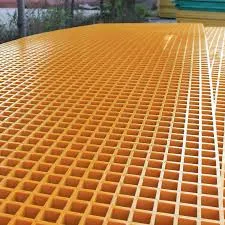
-
 Afrikaans
Afrikaans -
 Albanian
Albanian -
 Amharic
Amharic -
 Arabic
Arabic -
 Armenian
Armenian -
 Azerbaijani
Azerbaijani -
 Basque
Basque -
 Belarusian
Belarusian -
 Bengali
Bengali -
 Bosnian
Bosnian -
 Bulgarian
Bulgarian -
 Catalan
Catalan -
 Cebuano
Cebuano -
 China
China -
 China (Taiwan)
China (Taiwan) -
 Corsican
Corsican -
 Croatian
Croatian -
 Czech
Czech -
 Danish
Danish -
 Dutch
Dutch -
 English
English -
 Esperanto
Esperanto -
 Estonian
Estonian -
 Finnish
Finnish -
 French
French -
 Frisian
Frisian -
 Galician
Galician -
 Georgian
Georgian -
 German
German -
 Greek
Greek -
 Gujarati
Gujarati -
 Haitian Creole
Haitian Creole -
 hausa
hausa -
 hawaiian
hawaiian -
 Hebrew
Hebrew -
 Hindi
Hindi -
 Miao
Miao -
 Hungarian
Hungarian -
 Icelandic
Icelandic -
 igbo
igbo -
 Indonesian
Indonesian -
 irish
irish -
 Italian
Italian -
 Japanese
Japanese -
 Javanese
Javanese -
 Kannada
Kannada -
 kazakh
kazakh -
 Khmer
Khmer -
 Rwandese
Rwandese -
 Korean
Korean -
 Kurdish
Kurdish -
 Kyrgyz
Kyrgyz -
 Lao
Lao -
 Latin
Latin -
 Latvian
Latvian -
 Lithuanian
Lithuanian -
 Luxembourgish
Luxembourgish -
 Macedonian
Macedonian -
 Malgashi
Malgashi -
 Malay
Malay -
 Malayalam
Malayalam -
 Maltese
Maltese -
 Maori
Maori -
 Marathi
Marathi -
 Mongolian
Mongolian -
 Myanmar
Myanmar -
 Nepali
Nepali -
 Norwegian
Norwegian -
 Norwegian
Norwegian -
 Occitan
Occitan -
 Pashto
Pashto -
 Persian
Persian -
 Polish
Polish -
 Portuguese
Portuguese -
 Punjabi
Punjabi -
 Romanian
Romanian -
 Russian
Russian -
 Samoan
Samoan -
 Scottish Gaelic
Scottish Gaelic -
 Serbian
Serbian -
 Sesotho
Sesotho -
 Shona
Shona -
 Sindhi
Sindhi -
 Sinhala
Sinhala -
 Slovak
Slovak -
 Slovenian
Slovenian -
 Somali
Somali -
 Spanish
Spanish -
 Sundanese
Sundanese -
 Swahili
Swahili -
 Swedish
Swedish -
 Tagalog
Tagalog -
 Tajik
Tajik -
 Tamil
Tamil -
 Tatar
Tatar -
 Telugu
Telugu -
 Thai
Thai -
 Turkish
Turkish -
 Turkmen
Turkmen -
 Ukrainian
Ukrainian -
 Urdu
Urdu -
 Uighur
Uighur -
 Uzbek
Uzbek -
 Vietnamese
Vietnamese -
 Welsh
Welsh -
 Bantu
Bantu -
 Yiddish
Yiddish -
 Yoruba
Yoruba -
 Zulu
Zulu
Innovative Fiberglass Clarifier Solutions for Effective Water Treatment Systems
Understanding Fiberglass Clarifiers A Comprehensive Overview
In the realm of water treatment, the need for efficient and sustainable solutions has never been more critical. One innovation that has gained traction in recent years is the fiberglass clarifier. This essential piece of equipment plays a significant role in improving the quality of water by removing suspended solids and pollutants. In this article, we will explore what fiberglass clarifiers are, how they function, and their advantages over traditional materials.
What is a Fiberglass Clarifier?
A fiberglass clarifier is a water treatment device designed to separate solids from liquids. It typically consists of a cylindrical tank made from fiberglass-reinforced plastic, which is known for its strength, durability, and resistance to corrosion. These clarifiers are commonly used in various applications, including municipal water treatment plants, industrial processes, and even in aquaculture systems.
The primary function of a clarifier is to allow particles heavier than water to settle at the bottom of the tank. This sedimentation process aids in providing cleaner effluent and is a necessary step before the water can undergo further treatment or be discharged back into the environment.
How Do Fiberglass Clarifiers Work?
The operation of a fiberglass clarifier is relatively straightforward. Wastewater enters the clarifier through an inlet pipe and is evenly distributed across the tank. As the flow of water slows down, gravity works to pull solid particles down to the bottom of the tank. At this point, solids accumulate and form a sludge blanket. The clear water, now separated from the sludge, rises to the top and exits through an overflow outlet.
To enhance the efficiency of the sedimentation process, many fiberglass clarifiers are designed with specific features, such as inclined plates or tubes that provide additional surface area for solid particles to settle more effectively
. This design helps increase the capacity of the clarifier without requiring a larger footprint.Advantages of Fiberglass Clarifiers
fiberglass clarifier

Fiberglass clarifiers offer numerous advantages over traditional clarifier materials, such as steel or concrete. Here are some key benefits
1. Corrosion Resistance One of the most significant advantages of fiberglass is its resistance to corrosive elements, such as chemicals, salts, and environmental factors. This durability ensures a longer lifespan and reduces the need for frequent maintenance or replacements.
2. Lightweight Construction Fiberglass is considerably lighter than concrete or steel, which makes transportation and installation easier. This lightweight nature can lead to lower construction costs and a faster project timeline.
3. Lower Operating Costs The efficiency of fiberglass clarifiers often translates to reduced operating costs. Their durability and low maintenance requirements mean that organizations can save money over the clarifier's lifetime.
4. Customizability Fiberglass can be molded into various shapes and sizes, accommodating specific requirements for different applications. This flexibility allows engineers to design clarifiers that fit the unique needs of a facility.
5. Environmentally Friendly Many fiberglass clarifiers are designed with sustainability in mind. They typically require less energy to operate compared to traditional materials, contributing to a smaller carbon footprint.
6. Reduced Sludge Output Advanced designs of fiberglass clarifiers can help minimize the volume of sludge produced, making it easier to manage and dispose of. This feature is particularly beneficial in wastewater treatment plants.
Conclusion
As demands for cleaner and safer water grow, the need for effective treatment solutions like fiberglass clarifiers becomes increasingly important. Their corrosion resistance, lightweight construction, and cost-effectiveness make them a popular choice for various applications. With the ability to customize designs and reduce operational costs, fiberglass clarifiers stand as a testament to engineering innovation that aligns with both environmental and economic goals. As water treatment technologies continue to evolve, fiberglass clarifiers will undoubtedly play a pivotal role in the industry’s move toward sustainability and efficiency.









